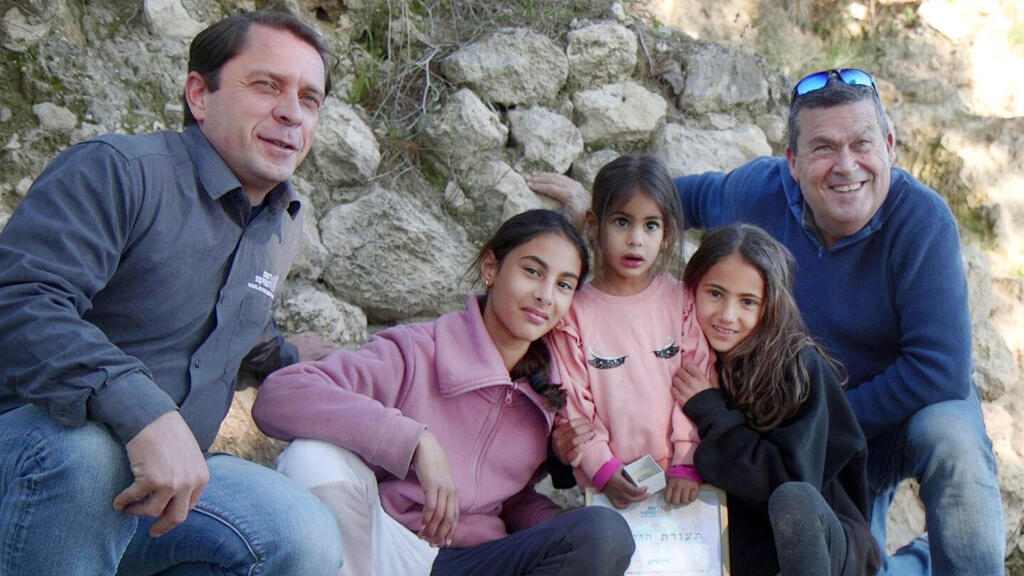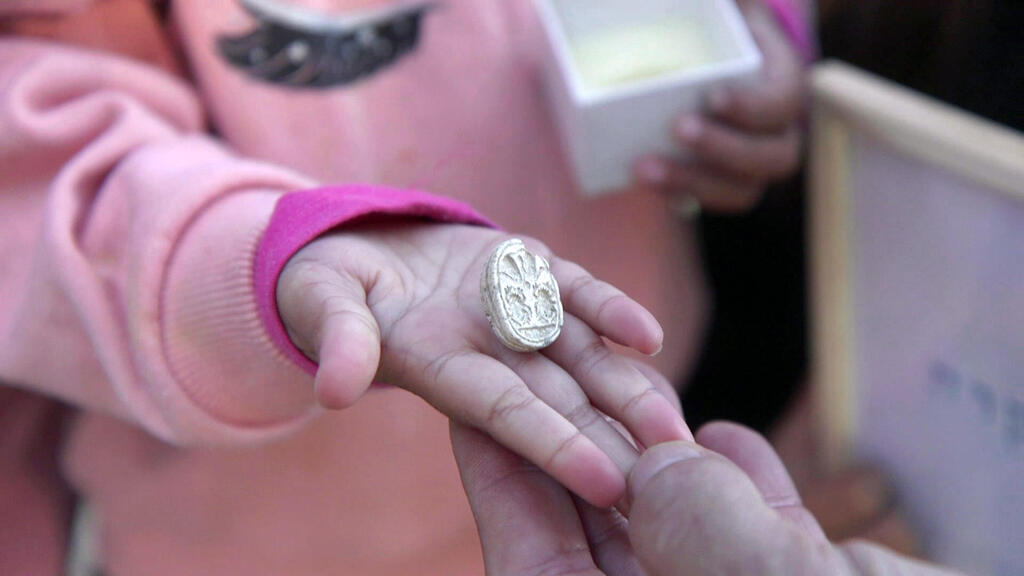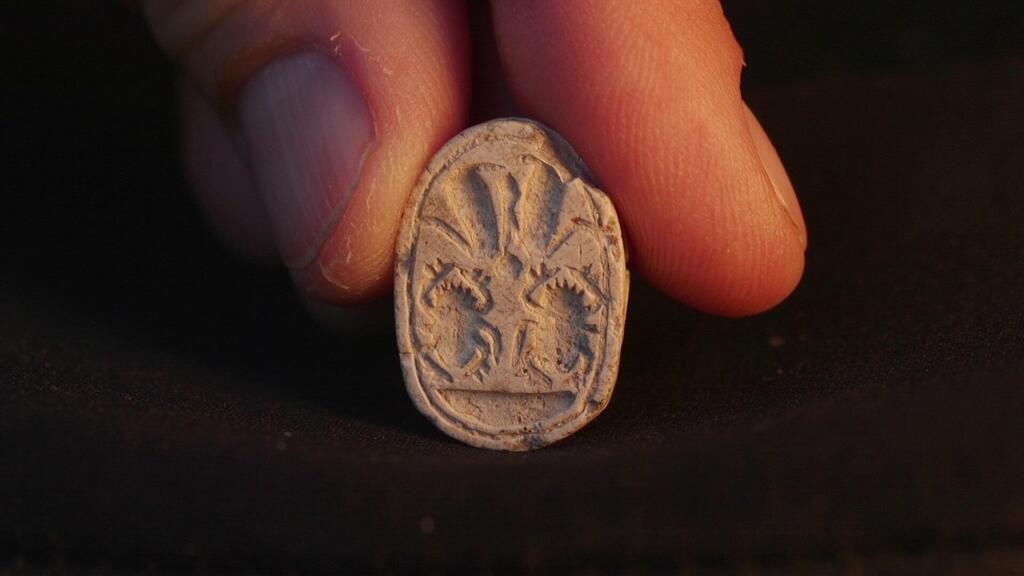A routine family outing turned into an extraordinary archaeological discovery when 3.5-year-old Ziv Nitzan stumbled upon a 3,800-year-old Canaanite scarab seal at Tel Azeka, near Beit Shemesh.
On a family trip early in March, Ziv picked up what appeared to be an ordinary stone. "We were walking along the path, and then Ziv bent down – and out of all the stones around her, she picked up this particular stone," recalled her sister, Omer Nitzan.
"When she rubbed it and removed the sand from it, we saw something was different about it. I called my parents to come see the beautiful stone and we realized we had discovered an archaeological find! We immediately reported this to the Israel Antiquities Authority."
Semyon Gendler, the Judah Region District Archaeologist for the Israel Antiquities Authority (IAA), praised Ziv and her family for their quick reporting of the find and awarded her a certificate of appreciation for good citizenship.
The artifact will be showcased in a special Passover exhibition at the Jay and Jeanie Schottenstein National Campus for the Archaeology of Israel, alongside other Egyptian and Canaanite artifacts, many of which will be displayed for the first time.
Dr. Daphna Ben-Tor, an expert in ancient seals and amulets, identified the artifact as a Canaanite scarab from the Middle Bronze Age. "Scarabs were used in this period as seals and as amulets. They were found in graves, in public buildings, and in private homes. Sometimes they bear symbols and messages that reflect religious beliefs or status," she explained.
Get the Ynetnews app on your smartphone: Google Play: https://bit.ly/4eJ37pE | Apple App Store: https://bit.ly/3ZL7iNv
Shaped like a dung beetle, the scarab was a sacred symbol in ancient Egypt, associated with the concept of creation and renewal. The Egyptian word for scarab comes from the verb "to come into being" or "to be created," as the beetle was seen as an incarnation of the creator god.
The scarab was found at the foot of Tel Azeka, a site rich in historical significance. Excavations led by Tel Aviv University have uncovered evidence of numerous cultural shifts throughout history, including remnants from the Judahite Kingdom such as city walls and agricultural installations. The site is also linked to the biblical battle between David and Goliath, as described in the Book of Samuel.
"We have been excavating here for almost 15 years, and the excavation findings show that during the Middle Bronze and Late Bronze Ages, here in Tel Azekah thrived one of the most important cities in the Judean Lowlands," said Prof. Oded Lipschits, director of the Tel Aviv University excavation.
"The scarab found by Ziv joins a long list of Egyptian and Canaanite finds discovered here, which attest to the close ties and cultural influences between Canaan and Egypt during that period."
Heritage Minister Amichai Eliyahu stressed the discovery’s significance. "The seal that little Ziv found during a family trip to Tel Azekah connects us to a grand story, that of the ancient civilizations that lived in this land thousands of years ago. The scarab Ziv found also reminds us that in the Land of Israel, even children can be a part of discovering history."
Israel Antiquities Authority Director Eli Escusido commended Ziv’s family for handing over the artifact. "Thanks to her, everyone will be able to see it and enjoy it. In honor of Passover, we will present the seal in a special exhibition set up by the Israel Antiquities Authority at the Jay and Jeanie Schottenstein National Campus for the Archaeology of Israel, alongside other findings from the Egyptian and Canaanite eras."




